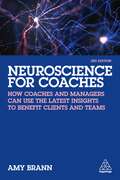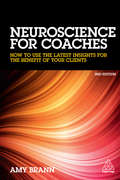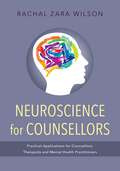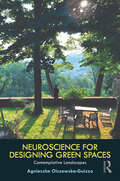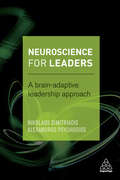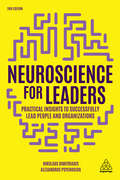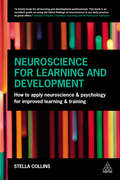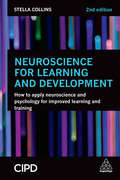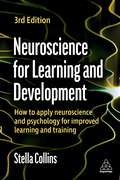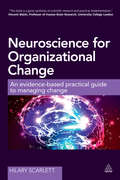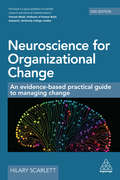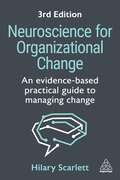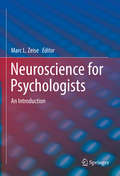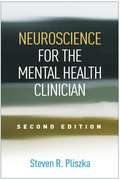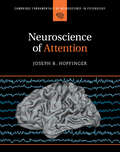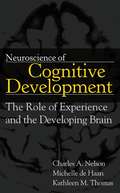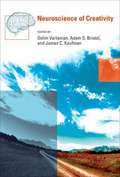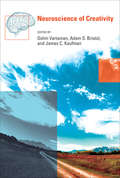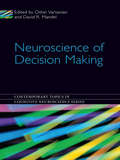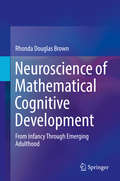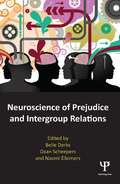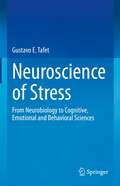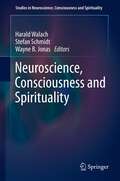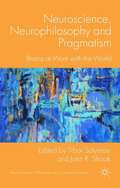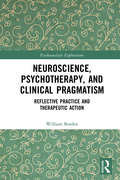- Table View
- List View
Neuroscience for Coaches: How coaches and managers can use the latest insights to benefit clients and teams
by Amy BrannMany coaching tools and techniques are now well established, but how do they actually work? The third edition of Neuroscience for Coaches answers this question to help coaches and managers deliver greater value to clients and employees.Based on extensive research, Neuroscience for Coaches provides a clear explanation of the aspects of neuroscience that are relevant to coaching so coaches can describe to clients why particular techniques work and the benefits to be gained from using them. It also features interviews with Marshall Goldsmith, Susan Grandfield, Christian van Nieuwerburgh and Kim Morgan on topics including mindfulness and behaviour change in coaching.This fully updated third edition covers the latest neuroscientific research on key brain areas and their functions, such as the Prefrontal cortex and Amygdala which affect attention, processing and emotional regulation. With tips and insights throughout, it crucially demonstrates the ways in which coaches and managers who coach can use this information effectively and practically in their everyday work. Neuroscience for Coaches is a vital resource for improving coaching practice with the latest scientific developments, tools and techniques.
Neuroscience for Coaches: How to Use the Latest Insights for the Benefit of Your Clients
by Amy BrannMany coaching tools and techniques are now fairly well established, but how do they actually work? Neuroscience for Coaches equips coaches with information that will help them answer this question and therefore deliver greater value to clients. Based on over twelve years of research, this book provides a clear explanation of the aspects of neuroscience that are relevant to coaching so you can describe to clients from a neuroscientific perspective why particular techniques and methods work and the benefits to them.This fully updated 2nd edition of Neuroscience for Coaches includes new interviews with Marshall Goldsmith, Susan Greenfield, Christian van Nieuwerburgh and Kim Morgan, along with new material on oxytocin, goals and mindfulness. It covers the latest neuroscientific research and, crucially, the ways in which coaches can use this information effectively and practically in their everyday work. Neuroscience for Coaches is a vital resource for keeping up to date with recent scientific developments, tools and techniques in coaching.
Neuroscience for Counsellors: Practical Applications for Counsellors, Therapists and Mental Health Practitioners
by Rachal Zara WilsonThis is an invaluable resource for counsellors and therapists looking to reinvigorate their practice and enhance their understanding of clients' needs. Each chapter focuses on different discoveries in neuroscience, explains them in plain English and provides guidance on how to put this knowledge to practical use in the therapy room. It covers specific psychological and neurological diagnoses including bipolar affective disorder, eating disorders and ADHD, as well as other more general issues such as attachment and addiction. The book also contains recommendations backed by evidence from neuroscience for optimum mental health involving nutrition, sleep and exercise, and a comprehensive glossary of technical terms. Presenting the practical applications of neuroscience, this book will be of immeasurable use to counsellors, psychotherapists and psychologists, and also of interest to social workers and mental health practitioners.
Neuroscience for Designing Green Spaces: Contemplative Landscapes
by Agnieszka Olszewska-GuizzoUrban parks and gardens are where people go to reconnect with nature and destress. But do they all provide the same benefits or are some better than others? What specific attributes set some green spaces apart? Can we objectively measure their impact on mental health and well-being? If so, how do we use this evidence to guide the design of mentally healthy cities? The Contemplative Landscape Model unveils the path to answer these questions. Rooted in landscape architecture and neuroscience, this innovative concept is described for the first time in an extended format, offering a deep dive into contemplative design and the science behind it. In the face of the global mental health crisis, and increasing disconnection from nature, design strategies for creating healthier urban environments are what our cities so sorely need. This book delves into the neuroscience behind contemplative landscapes, their key spatial characteristics, and practical applications of the Contemplative Landscape Model through case studies from around the world. Landscape architects, urban planners, students, land managers, and anyone interested in unlocking the healing power of landscapes will find inspiration here.
Neuroscience for Leaders: A Brain Adaptive Leadership Approach
by Dr Nikolaos Dimitriadis Dr Alexandros PsychogiosTo behave more productively in complex business situations, we need to understand and alter the inner workings of our brain. With insight from applied neuroscience, behavioural economics and psychology, the brain can be retrained and become our most valuable asset. Neuroscience for Leaders takes a practical approach and offers an easy-to-implement framework for making the behavioural changes to become a more effective leader. Drawing on research and practical experience, the authors present a flexible framework for fine-tuning the leadership brain. The Brain Adaptive Leadership approach is a step-by-step guide to enhancing the way you think, understanding and nurturing emotions, shaping automated brain responses, and developing dynamic relations. Neuroscience for Leaders explains both the underlying science and how to apply its findings in business, demonstrating why and how you can become a better leader through brain-based learning. With tools, managerial tips and clear actions to implement the method straight away, Neuroscience for Leaders is an invaluable companion to managers and leaders who want to gain the brain edge.
Neuroscience for Leaders: Practical Insights to Successfully Lead People and Organizations
by Dr Nikolaos Dimitriadis Dr Alexandros PsychogiosUnlock your potential with the latest neuroscientific insights and succeed as a leader in complex business environments.As understanding of neuroscience increases, it is better understood how scientific insights can be applied to develop and enhance leadership. Neuroscience for Leaders captures the most up-to-date and important findings in neuroscience and links these to the business world. This guide offers a simple framework to put these principles into practice to make better decisions, take the right actions and find faster solutions.Now in its second edition, this book presents a comprehensive approach to leading people and organizations based on academic research. The authors' 'Brain Adaptive Leadership' approach offers a step-by-step guide to enhancing the way leaders think, understanding and nurturing emotions, shaping automated brain responses and developing dynamic relationships. Examples, activities and practical suggestions are all designed to be clear and engaging. Neuroscience for Leaders is the essential guide for leaders who are ready to gain the business advantage scientifically.
Neuroscience for Learning and Development
by Stella CollinsNeuroscience for Learning and Development is about the psychology and neuroscience that underpins effective and successful training and learning. It introduces the latest research and concepts and suggests practical tools, techniques and ideas to improve how trainers train and how people learn. Readers will find new and more effective ways of working and will discover a sound basis for good practice. They will also discover the research that backs up what they are already doing well and evidence to support future projects and plans in order to make a convincing case to budget holders. Neuroscience for Learning and Development covers the design and delivery of face-to-face, online and virtual learning as well as how to create environments which make learning easier. It provides evidence to stop training and learning being seen as 'soft and fluffy' and will help trainers and L&D teams persuade the rest of their organization of their value. This book explains the science behind creative training delivery so that learners will be motivated, enjoy training, pay attention, remember what they learn and be able to apply it back at work. It explains the neuroscience of attention, memory and habits and how to make sure people learn what they need to learn. Readers will be able to distinguish the neuromyths from the neuroscience and will find out which elements of brain science offer evidence for current practice and as well as discovering new ideas to continue to develop their skills and practice.
Neuroscience for Learning and Development: How to Apply Neuroscience and Psychology for Improved Learning and Training
by Stella CollinsIn order to design and deliver effective Learning and Development (L&D) initiatives, it is essential to understand how our brains work to learn, process and retain information. Neuroscience for Learning and Development introduces the latest research and concepts in the field, equipping learning and development and training professionals with an understanding of some of the inner workings of the mind. Covering areas such as how to create effective learning environments, promoting motivation and how to make learning 'stickier' through using stories and narratives, this book offers practical tools and ideas that can be applied in a variety of contexts, from training sessions and coaching conversations, to lectures and presentations. Featuring insights from L&D practitioners who have applied such approaches in practice, readers will not only find new techniques to implement right away, but also discover the research that backs up what they are already doing well, enabling them to make convincing cases to budget holders.This updated second edition of Neuroscience for Learning and Development contains new chapters on digital learning and the importance of rest and sleep, as well as updated wider content and new material on mindfulness, learning through your senses, and the neuroscience of habits.
Neuroscience for Learning and Development: How to Apply Neuroscience and Psychology for Improved Learning and Training
by Stella CollinsNeuroscience for Learning and Development provides L&D professionals the tools and ideas to design and deliver effective initiatives with knowledge of how our brains process information.Using the latest research and concepts, this book covers areas such as motivation, habits and the link between sleep and learning. It demonstrates how to create effective learning environments and make learning 'stickier' with advancements in AI and digital learning, and through the use of stories. The practical tools and guidance can be applied in different contexts, such as digital learning, in-person training sessions and presentations.The third edition contains a new chapter on creating an autonomous learning culture. It explains the strategies, tools and techniques L&D professionals can use to encourage and support employees to learn in the flow of work. With insights from L&D practitioners who have applied these approaches in organizations such as The Open University, this edition is an indispensable book for creating and maintaining workplace learning that benefits people and organizations.
Neuroscience for Organizational Change
by Hilary ScarlettUnderstanding how employees' brains work enables organizations to build cultures, design structures and processes that help people to be more innovative, productive and engaged. This has lasting impact in terms of meeting business objectives and becoming an employer of choice. We need to change the way we manage change in organizations: by understanding the brain we can do this better. Neuroscience brings a new lens through which to look at people and to understand why they react to situations in a certain way, what they need from work relationships to perform at their best, and how they might be better motivated. Neuroscience for Organizational Change not only provides evidence that will persuade the most sceptical of leaders but also provides many practical examples of how to apply the insights. The book provides a 'win-win': it will enable the organization to improve performance and also help to support the mental and emotional well-being of employees. Amongst other areas, Neuroscience for Organizational Change explores why we find organizational change difficult and what we can do to keep people focused and performing at their best. It looks at our need for social connection at work, the essential role that leaders and managers play, how best to manage emotions and reduce bias to avoid making flawed decisions, and why we need communication, involvement and storytelling to help us through change. It also sets out a new science-based planning tool, SPACES, to enhance motivation. Drawing on the author's successful masterclasses, Neuroscience for Organizational Change provides practical guidance and examples from big-name organizations such as Lloyds Banking Group, Department for Business, Innovation and Skills, Orbit Housing Group and BAE Systems. Each chapter includes checklists and questions to help the reader to reflect on what they might take away and apply to the specific context of their own organization.
Neuroscience for Organizational Change: An Evidence-based Practical Guide to Managing Change
by Hilary ScarlettOrganizational change can be unpredictable and stressful. With a better understanding of what our brains need to focus and perform at their best, organizations and leaders can increase employee engagement, productivity and well-being to successfully manage such periods of uncertainty. Drawing on the latest scientific research and verified by an independent neuroscientist, Neuroscience for Organizational Change explores the need for social connection at work, how best to manage emotions and reduce bias in decision-making, and why we need communication, involvement and storytelling to help us through change. Practical tips and suggestions can be found throughout, as well as examples of how these insights have been applied at organizations such as Lloyds Banking Group and GCHQ. The book also sets out a practical science-based planning model, SPACES, to enhance engagement. This updated second edition of Neuroscience for Organizational Change contains new chapters on planning the working day with the brain in mind and on overcoming the difficulties related to behavioural change. It also features up-to-the-minute wider content reflecting the latest insights and developments, and updated case studies from the first edition which give a long-term view of the benefits of applying neuroscience in organizations.
Neuroscience for Organizational Change: An Evidence-based Practical Guide to Managing Change
by Hilary ScarlettOrganizational change can be unpredictable and stressful. With a better understanding of what our brains need to focus, organizations can increase employee engagement, productivity and wellbeing to successfully manage periods of uncertainty. Drawing on the latest scientific research, the third edition of Neuroscience for Organizational Change brings the work of neuroscientists out of the lab and into the workplace in a practical and accessible way. It explores the need for social connection at work, how best to manage emotions, how to top up our mental energy, what influences our behaviour and our decision-making and why we need communication, involvement and collaboration to help us through change.This updated edition features a new chapter on neurodiversity and psychological safety, as well as new content based on the latest fascinating insights from neuroscience such as the impact of interoception on our decision-making, how to create a 'challenge' mindset at work, what makes us more receptive to feedback and the role of interbrain synchronization in team performance and collaboration. Full of practical tips, interviews and examples of how these insights have been applied from organizations such as PepsiCo, the Neurodiversity Employee Resource Group at Philips and the UK's Office for National Statistics, this essential guide provides a long-term view of the benefits of applying neuroscience in organizations.
Neuroscience for Psychologists: An Introduction
by Marc L. ZeiseThis textbook is intended to give an introduction to neuroscience for students and researchers with no biomedical background. Primarily written for psychologists, this volume is a digest giving a rapid but solid overview for people who want to inform themselves about the core fields and core concepts in neuroscience but don’t need so many anatomical or biochemical details given in “classical” textbooks for future doctors or biologists. It does not require any previous knowledge in basic science, such as physics or chemistry. On the other hand, it contains chapters that do go beyond the issues dealt with in most neuroscience textbooks: One chapter about mathematical modelling in neuroscience and another about “tools of neuroscience” explaining important methods. The book is divided in two parts. The first part presents core concepts in neuroscience:Electrical Signals in the Nervous SystemBasics of NeuropharmacologyNeurotransmitters The second part presents an overview of the neuroscience fields of special interest for psychology:Clinical NeuropharmacologyInputs, Outputs and Multisensory ProcessingNeural Plasticity in HumansMathematical Modeling in Neuroscience Subjective Experience and its Neural Basis The last chapter, “Tools of Neuroscience” presents important methodogical approaches in neuroscience with a special focus on brain imaging. Neuroscience for Psychologists aims to fill a gap in the teaching literature by providing an introductory text for psychology students that can also be used in other social sciences courses, as well as a complement in courses of neurophysiology, neuropharmacology or similar in careers outside as well as inside biological or medical fields. Students of data sciences, chemistry and physics as well as engineering interested in neuroscience will also profit from the text.
Neuroscience for the Mental Health Clinician, Second Edition
by Steven R. PliszkaAccessible and succinct, this book has given thousands of clinicians and students the basic understanding of neuroscience that is essential in contemporary mental health practice. Steven R. Pliszka synthesizes current knowledge on the neurobiological bases of major psychiatric disorders. He explores the brain systems that underlie cognition, emotions, and behavior; how disturbances in these systems can lead to psychopathology; and the impact of genetic and environmental risk factors across development. The book also addresses the ways that both pharmacological and psychosocial treatments act on the brain as they bring about a reduction in symptoms. Illustrations include 93 black-and-white figures and 14 color plates. New to This Edition *Incorporates over a decade of important advances in brain science. *Heightened focus on brain networks replaces a deficit-based understanding of disorders. *Cutting-edge discussions of genetics and epigenetics, the biological impact of stress, neurotransmitters, novel depression treatments, and other timely topics. *Detailed chapters on autism spectrum disorder and dementia. *Numerous new and revised figures.
Neuroscience of Attention (Cambridge Fundamentals of Neuroscience in Psychology)
by Joseph B. HopfingerAttention is critical to our daily lives, from simple acts of reading or listening to a conversation to the more demanding situations of trying to concentrate in a noisy environment or driving on a busy roadway. This book offers a concise introduction to the science of attention, featuring real-world examples and fascinating studies of clinical disorders and brain injuries. It introduces cognitive neuroscience methods and covers the different types and core processes of attention. The links between attention, perception, and action are explained, along with exciting new insights into the brain mechanisms of attention revealed by cutting-edge research. Learning tools – including an extensive glossary, chapter reviews, and suggestions for further reading – highlight key points and provide a scaffolding for use in courses. This book is ideally suited for graduate or advanced undergraduate students as well as for anyone interested in the role attention plays in our lives.
Neuroscience of Cognitive Development
by Charles A. Nelson Kathleen M. Thomas Michelle De HaanA new understanding of cognitive development from the perspective of neuroscienceThis book provides a state-of-the-art understanding of the neural bases of cognitive development. Although the field of developmental cognitive neuroscience is still in its infancy, the authors effectively demonstrate that our understanding of cognitive development is and will be vastly improved as the mechanisms underlying development are elucidated.The authors begin by establishing the value of considering neuroscience in order to understand child development and then provide an overview of brain development. They include a critical discussion of experience-dependent changes in the brain. The authors explore whether the mechanisms underlying developmental plasticity differ from those underlying adult plasticity, and more fundamentally, what distinguishes plasticity from development.Having armed the reader with key neuroscience basics, the book begins its examination of the neural bases of cognitive development by examining the methods employed by professionals in developmental cognitive neuroscience. Following a brief historical overview, the authors discuss behavioral, anatomic, metabolic, and electrophysiological methods. Finally, the book explores specific content areas, focusing on those areas where there is a significant body of knowledge on the neural underpinnings of cognitive development, including:* Declarative and non-declarative memory and learning* Spatial cognition* Object recognition* Social cognition* Speech and language development* Attention developmentFor cognitive and developmental psychologists, as well as students in developmental psychology, neuroscience, and cognitive development, the authors' view of behavioral development from the perspective of neuroscience sheds new light on the mechanisms that underlie how the brain functions and how a child learns and behaves.
Neuroscience of Creativity
by James C. Kaufman Oshin Vartanian Adam S. BristolThis volume offers a comprehensive overview of the latest neuroscientific approaches to the scientific study of creativity. In chapters that progress logically from neurobiological fundamentals to systems neuroscience and neuroimaging, leading scholars describe the latest theoretical, genetic, structural, clinical, functional, and applied research on the neural bases of creativity. The treatment is both broad and in depth, offering a range of neuroscientific perspectives with detailed coverage by experts in each area. Following opening chapters that offer theoretical context, the contributors discuss such issues as the heritability of creativity; creativity in patients with brain damage, neurodegenerative conditions, and mental illness; clinical interventions and the relationship between psychopathology and creativity; neuroimaging studies of intelligence and creativity; neuroscientific basis of creativity-enhancing methodologies; and the information-processing challenges of viewing visual art. ContributorsBaptiste Barbot, Mathias Benedek, David Q. Beversdorf, Aaron P. Blaisdell, Margaret A. Boden, Dorret I. Boomsma, Adam S. Bristol, Shelley Carson, M. H. M. de Moor, Andreas Fink, Liane Gabora, Dennis Garlick, Elena L. Grigorenko, Richard J. Haier, Rex E. Jung, James C. Kaufman, Helmut Leder, Kenneth J. Leising, Bruce L. Miller, Apara Ranjan, M. P. Roeling, W. David Stahlman, Mei Tan, Pablo P. L. Tinio, Oshin Vartanian, Indre V. Viskontas, Dahlia W. Zaidel
Neuroscience of Creativity (The\mit Press Ser.)
by James C. Kaufman Oshin Vartanian Adam S. BristolExperts describe current perspectives and experimental approaches to understanding the neural bases of creativity. This volume offers a comprehensive overview of the latest neuroscientific approaches to the scientific study of creativity. In chapters that progress logically from neurobiological fundamentals to systems neuroscience and neuroimaging, leading scholars describe the latest theoretical, genetic, structural, clinical, functional, and applied research on the neural bases of creativity. The treatment is both broad and in depth, offering a range of neuroscientific perspectives with detailed coverage by experts in each area. The contributors discuss such issues as the heritability of creativity; creativity in patients with brain damage, neurodegenerative conditions, and mental illness; clinical interventions and the relationship between psychopathology and creativity; neuroimaging studies of intelligence and creativity; the neuroscientific basis of creativity-enhancing methodologies; and the information-processing challenges of viewing visual art.ContributorsBaptiste Barbot, Mathias Benedek, David Q. Beversdorf, Aaron P. Blaisdell, Margaret A. Boden, Dorret I. Boomsma, Adam S. Bristol, Shelley Carson, Marleen H. M. de Moor, Andreas Fink, Liane Gabora, Dennis Garlick, Elena L. Grigorenko, Richard J. Haier, Rex E. Jung, James C. Kaufman, Helmut Leder, Kenneth J. Leising, Bruce L. Miller, Apara Ranjan, Mark P. Roeling, W. David Stahlman, Mei Tan, Pablo P. L. Tinio, Oshin Vartanian, Indre V. Viskontas, Dahlia W. Zaidel
Neuroscience of Decision Making (Contemporary Topics in Cognitive Neuroscience)
by Oshin Vartanian David R. MandelThe intersection between the fields of behavioral decision research and neuroscience has proved to be fertile ground for interdisciplinary research. Whereas the former is rich in formalized models of choice, the latter is rife with techniques for testing behavioral models at the brain level. As a result, there has been the rapid emergence of progressively more sophisticated biological models of choice, geared toward the development of ever more complete mechanistic models of behavior. This volume provides a coherent framework for distilling some of the key themes that have emerged as a function of this research program, and highlights what we have learned about judgment and decision making as a result. Although topics that are theoretically relevant to judgment and decision making researchers are addressed, the book also ventures somewhat beyond the traditional boundaries of this area to tackle themes that would of interest to a greater community of scholars. Neuroscience of Decision Making provides contemporary and essential reading for researchers and students of cognitive psychology, neuroscience, philosophy, and economics.
Neuroscience of Mathematical Cognitive Development: From Infancy Through Emerging Adulthood
by Rhonda Douglas BrownThis book examines the neuroscience of mathematical cognitive development from infancy into emerging adulthood, addressing both biological and environmental influences on brain development and plasticity. It begins by presenting major theoretical frameworks for designing and interpreting neuroscience studies of mathematical cognitive development, including developmental evolutionary theory, developmental systems approaches, and the triple-code model of numerical processing. The book includes chapters that discuss findings from studies using neuroscience research methods to examine numerical and visuospatial cognition, calculation, and mathematical difficulties and exceptionalities. It concludes with a review of mathematical intervention programs and recommendations for future neuroscience research on mathematical cognitive development.Featured neuroscience research methods include:Functional Magnetic Resonance Imaging (fMRI). Diffusion Tensor Imaging (DTI).Event Related Potentials (ERP).Transcranial Magnetic Stimulation (TMS).Neuroscience of Mathematical Cognitive Development is an essential resource for researchers, clinicians and related professionals, and graduate students in child and school psychology, neuroscience, educational psychology, neuropsychology, and mathematics education.
Neuroscience of Prejudice and Intergroup Relations
by Naomi Ellemers Belle Derks Daan ScheepersPsychological research on the origins and consequences of prejudice, discrimination, and stereotyping has moved into previously uncharted directions through the introduction of neuroscientific measures. Psychologists can now address issues that are difficult to examine with traditional methodologies and monitor motivational and emotional as they develop during ongoing intergroup interactions, thus enabling the empirical investigation of the fundamental biological bases of prejudice. However, several very promising strands of research have largely developed independently of each other. By bringing together the work of leading prejudice researchers from across the world who have begun to study this field with different neuroscientific tools, this volume provides the first integrated view on the specific drawbacks and benefits of each type of measure, illuminates how standard paradigms in research on prejudice and intergroup relations can be adapted for the use of neuroscientific methods, and illustrates how different methodologies can complement each other and be combined to advance current insights into the nature of prejudice. This cutting-edge volume will be of interest to advanced undergraduates, graduates, and researchers students who study prejudice, intergroup relations, and social neuroscience.
Neuroscience of Stress: From Neurobiology to Cognitive, Emotional and Behavioral Sciences
by Gustavo E. TafetThis textbook provides an introduction to the interdisciplinary study of stress, helping students and professionals understand the main neurobiological and psychological causes and consequences of stress in human beings. It’s aimed at understanding the concept of stress at different levels, from the impact of environmental stressors to its processing in the brain, and from the neural mechanisms involved in this processing to the expression of different adaptive responses. All these neural mechanisms are clearly explained according to different levels of complexity, from the neurobiological level, including the cellular and molecular mechanisms, to the psychological level, including the cognitive and emotional processing, and behavioral expressions.The whole content is described in a very comprehensive manner, accompanied with descriptive graphics to clearly illustrate every detail, therefore allowing a full integration of all the covered concepts. In addition, clinical expressions of stress, such as mood and anxiety disorders, are also covered in detail, including an overview of different factors of vulnerability and resilience, therefore providing a unique and fundamental insight of this interdisciplinary field. Given its interdisciplinary approach, Neuroscience of Stress: From Neurobiology to Cognitive, Emotional and Behavioral Sciences will provide a comprehensive and clear introduction to the study of stress to students and professionals from different fields of the behavioral and health sciences. It will serve as a valuable text for adoption in classes of a wide range of graduate courses dealing with mental health and well-being, in areas such as health and clinical psychology, health promotion and disease prevention, psychiatry and behavioral medicine, among others.
Neuroscience, Consciousness and Spirituality
by Wayne B. Jonas Harald Walach Stefan SchmidtNeuroscience, Consciousness and Spirituality presents a variety of perspectives by leading thinkers on contemporary research into the brain, the mind and the spirit. This volumes aims at combining knowledge from neuroscience with approaches from the experiential perspective of the first person singular in order to arrive at an integrated understanding of consciousness. Individual chapters discuss new areas of research, such as near death studies and neuroscience research into spiritual experiences, and report on significant new theoretical advances. From Harald Walach's introductory essay, "Neuroscience, Consciousness, Spirituality - Questions, Problems and Potential Solutions," to the concluding chapter by Robert K. C. Foreman entitled "An Emerging New Model for Consciousness: The Consciousness Field Model," this book represents a milestone in the progress towards an integrated understanding of spirituality, neuroscience and consciousness. It is the first in a series of books that are dedicated to this topic.
Neuroscience, Neurophilosophy and Pragmatism
by John R. Shook Tibor SolymosiBringing together active neuroscientists, neurophilosophers, and scholars this volume considers the prospects of a neuroscientifically-informed pragmatism and a pragmatically-informed neuroscience on issues ranging from the nature of mental life to the implications of neuroscience for education and ethics.
Neuroscience, Psychotherapy and Clinical Pragmatism: Reflective Practice and Therapeutic Action (Psychoanalytic Explorations)
by William BordenThis volume explores how the principles and values of pragmatic philosophy serve as orienting perspectives for critical thinking in contemporary psychotherapy and clinical practice. Drawing on the contributions of William James and John Dewey, Neuroscience, Psychotherapy, and Clinical Pragmatism introduces a model of clinical pragmatism emphasizing the individuality of the person, open-ended dialogue, experiential learning, and the practical outcomes of ideas and methods. In a second part, chapters show how recent developments in neuroscience and interpersonal neurobiology deepen our understanding of change and growth in accord with the principles of clinical pragmatism. Finally, the volume reviews paradigms of psychotherapy across the psychodynamic, behavioral, cognitive, and humanistic traditions. Case studies show how the pluralist orientation of clinical pragmatism enlarges concepts of therapeutic action. This text has been written for psychotherapists as well as scholars, educators, and trainees in the fields of psychiatry, clinical psychology, counseling, and social work.
